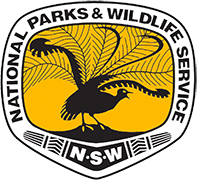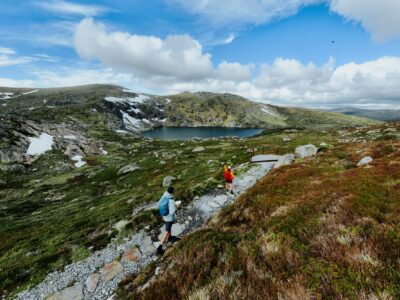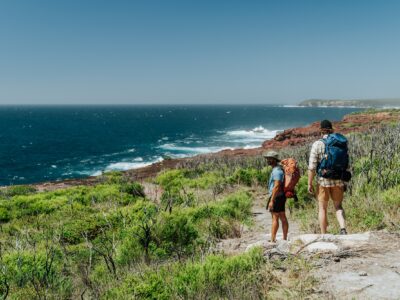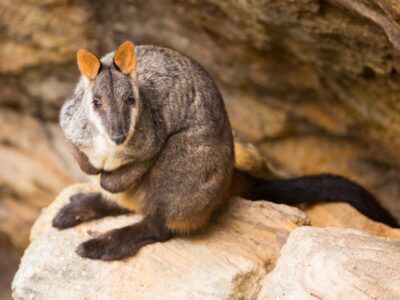Ever dreamt of ditching the desk job, packing a bag and heading for the great outdoors?
Yep, us too. We spent a day living vicariously through Dr Linda Broome, a threatened species expert working in one of Australia’s most unique national parks, to get a taste of her world.
Linda is out in the Cabramurra area on an overcast Thursday morning to provide supplementary food and water for the endangered mountain pygmy-possum, after the 2019-20 bushfires tore through the area and put the possum’s survival at even greater risk.
With 34 years of experience under her belt, Linda is no stranger to the boulder fields of Kosciuszko National Park.
-
Meet Australia’s cutest endangered animal
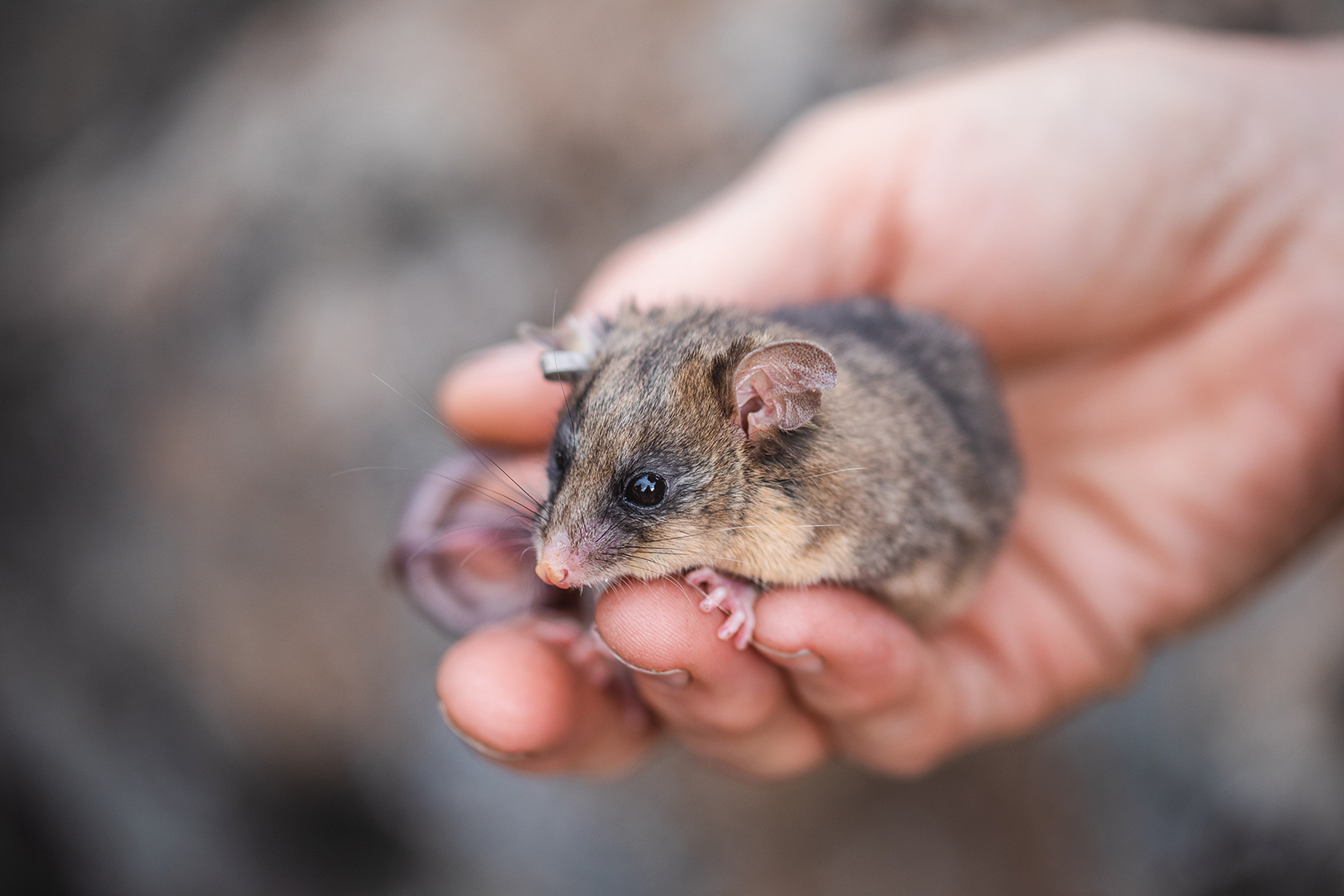 Photo Information
Photo InformationThe adorable and endangered mountain pygmy-possum, so comfortable in Dr Linda Broome’s hand.
Alex Pike/DPIE
The mountain pygmy-possum, unique to the Aussie high country and the only native marsupial to hibernate under snow cover, was discovered in 1966.
Did you know? The mountain pygmy-possum was first discovered from a fossil in 1896. It was believed to be extinct. In 1966, a single living possum was found in Victoria and, because no other records of the possum existed, it was declared the rarest animal on earth by the Guinness Book of Records in 1967. Now there are estimated to be about 2,500 adult possums in NSW and Victoria.
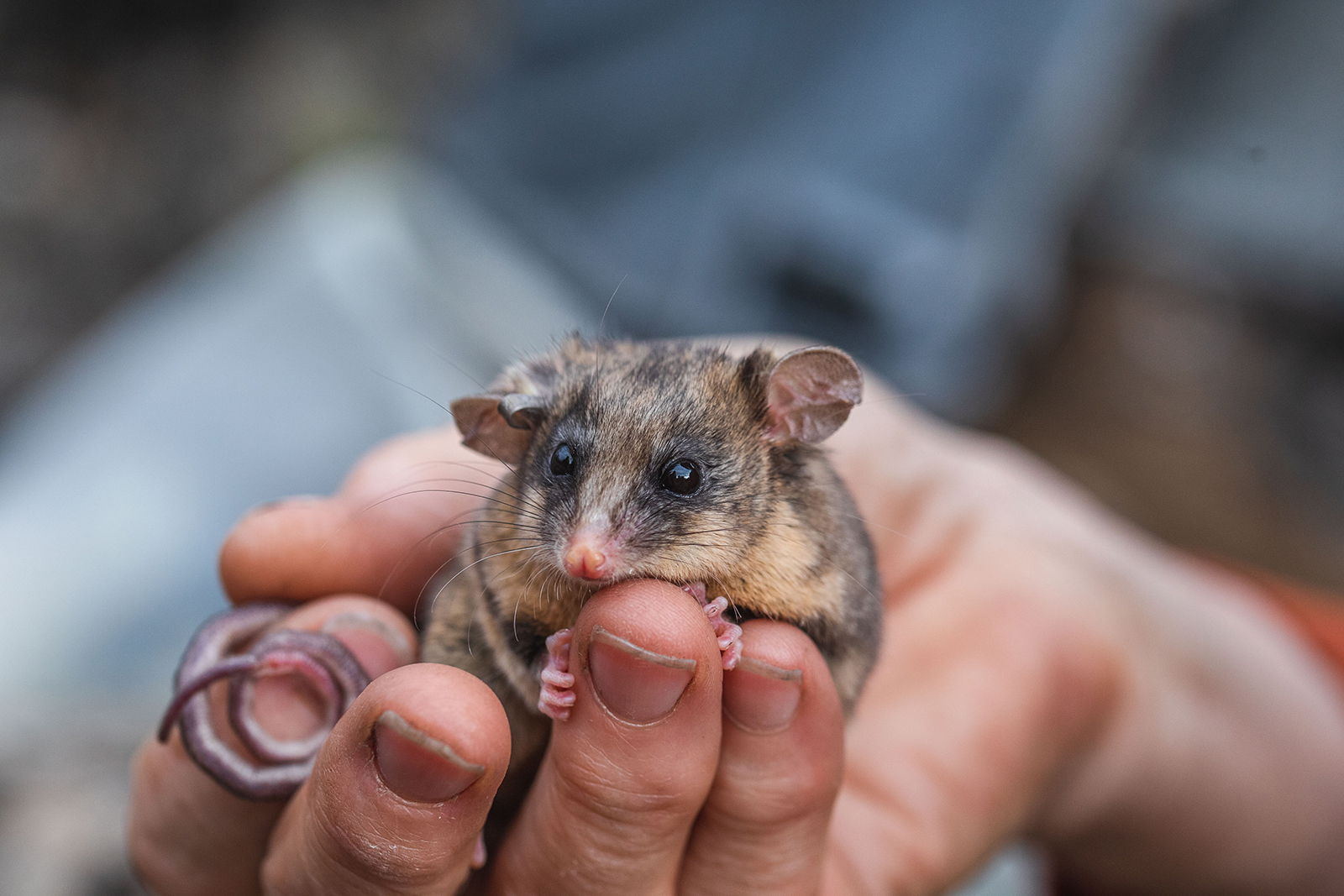 Photo Information
Photo InformationCuteness overload.
Alex Pike/DPIE
The biggest threat facing the species is climate change, as the possum relies on abundant water, insulation provided by snow cover and its primary food source, bogong moths. All three are now in short supply due to drought, rising temperatures and bushfires. Warmer temperatures also mean more predators, like feral cats and foxes, survive each winter and subsequently prey on the tiny possum.
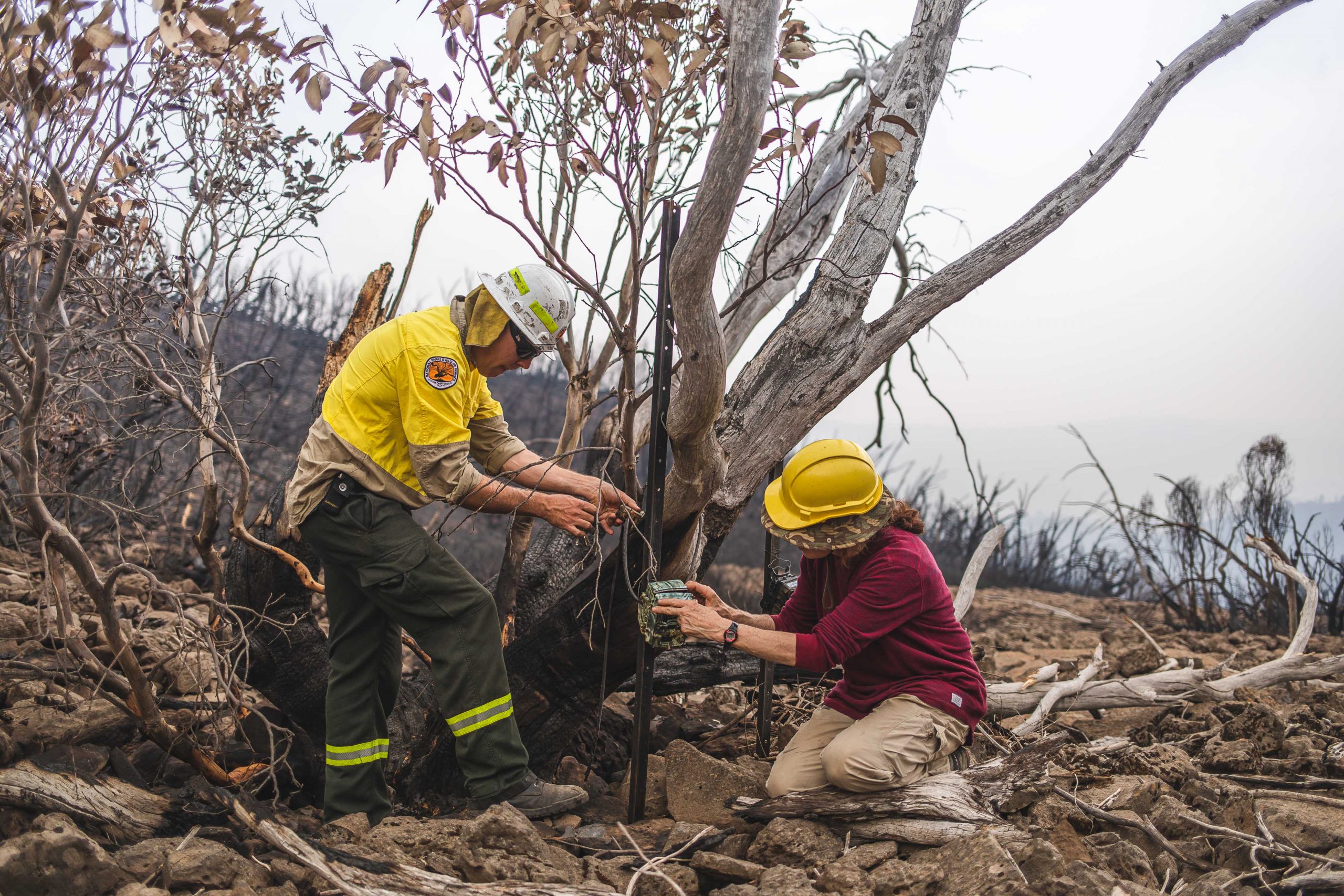 Photo Information
Photo InformationDr Linda Broome and a NSW National Parks and Wildlife Service (NPWS) officer check the remnants of a feral cat and fox monitoring camera, after the devastating fires of 2019-2020.
Alex Pike/DPIE
Having dedicated nearly half her life to securing a future for the animal, Linda has been disturbed by the scale of this bushfire season, which has devastated 30% of the mountain pygmy-possum’s habitat.
Did you know? Billions of bogong moths usually migrate to mountain pygmy-possum habitats every spring, providing a feast for the possums as they wake from hibernation. But in the last few years, the moth’s numbers have dwindled to become almost undetectable, leaving the possums hungry and at risk of starvation. It’s thought that the bright lights of the cities and towns could be distracting some of the moths away from their migration routes.
-
Out in the field
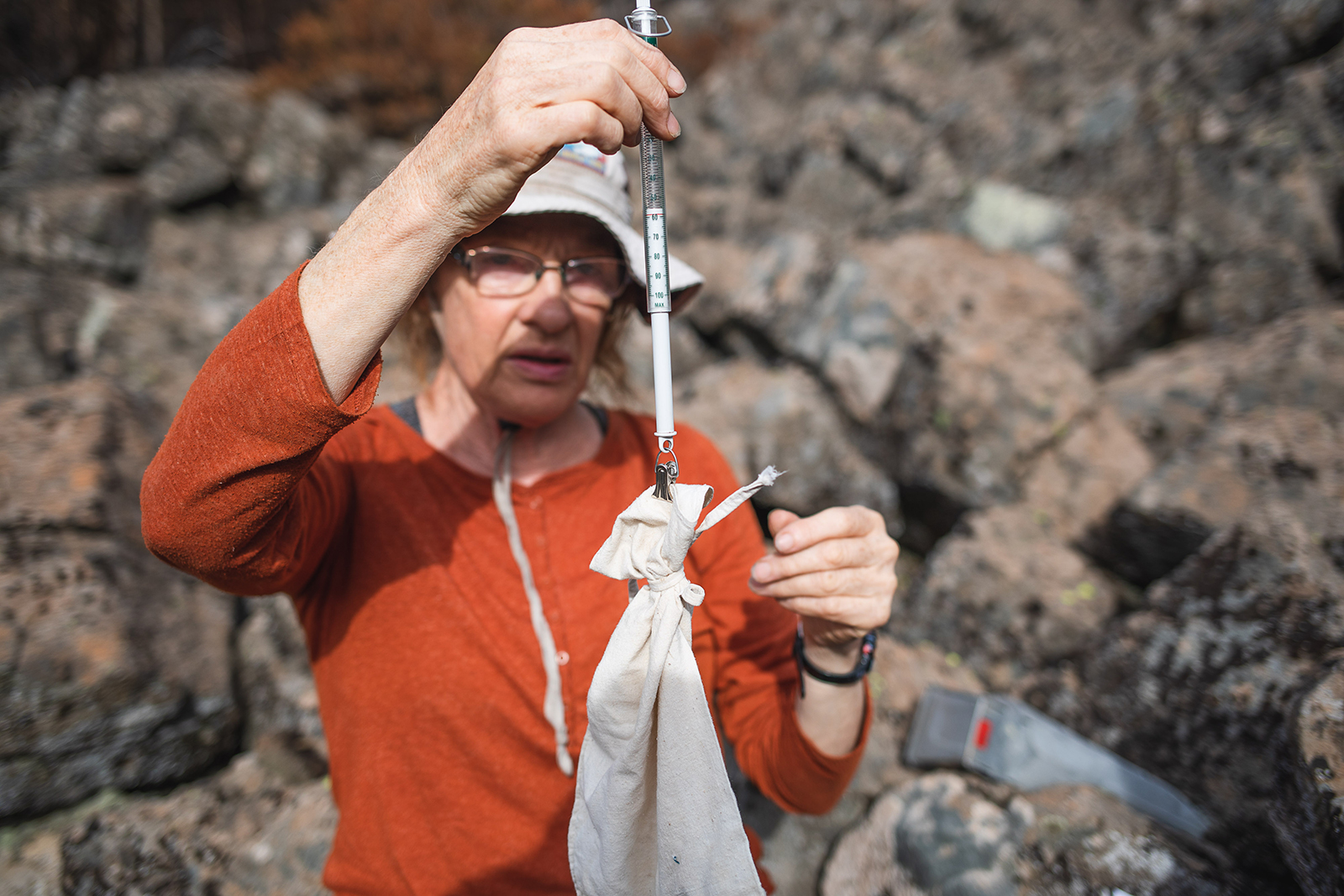 Photo Information
Photo InformationDr Linda Broome checks the weight of a mountain pygmy-possum
Alex Pike/DPIE
Linda hits the road with four volunteers at 6am, setting off on a winding three hour drive from her place to the first boulder field in the mountains of Cabramurra.
Once we’re out of the car, a steep climb up the mountain towards the boulders instantly gets our hearts pumping, especially with several litres of water and packs of food on our backs.
While Linda navigates the boulder-filled terrain with ease, the less-experienced volunteers struggle to keep up and maintain their footing (not us, obviously). The biggest challenge of her fieldwork, Linda says, is the unpredictable alpine weather. Thankfully, today stays dry, so the novices don’t have to overcome the additional hurdle of slippery surfaces.

Photo InformationSpecial biccies – bogong biscuits for the mountain pygmy-possum
Alex Pike/DPIE

Photo InformationLooking down into a mountain pygmy-possum feeding station, filled with bogong biccies
Alex Pike/DPIE

Photo InformationA NSW National Parks and Wildlife Service (NPWS) officer tops up a mountain pygmy-possum water station, with water in Kosciuszko National Park
Alex Pike/DPIE
Linda stops at each feeding station, which can be difficult to spot among the rocks, to check how much food and water is left, assess any damage to the feeding baskets (hungry bush rats are often to blame!) and review the remote camera footage.
The water stations are then replenished, food baskets filled with nuts and – most importantly – bogong biscuits. These special biccies were developed by Zoos Victoria using a veterinary-verified powder of natural ingredients, designed to replicate the nutritional value of bogong moths. Made from ingredients like mealworms, macadamia nuts and vitamin powders, they’re certainly no Tim Tams, but camera footage reveals the possums love these temporary bogong moth-replacements.
Linda began by baking these at home with help from volunteers, but the Saving our Species team back in her office has since pitched in to divide and conquer the weekly task of making 12kg of biscuits; enough to fill 61 feeding stations. The stations are scattered across six sites, with Linda usually visiting three or four of these each week, and NSW National Parks staff managing the rest.
The intense physical work in the field wraps up at about 6pm. Linda packs up and, after a quick pit stop for food in Cooma, arrives home at 11pm for a cuppa and a cuddle with her dog Maggie.
Linda will repeat today’s trip every week well into autumn before the possums begin hibernation. What a champ!
-
For the love of the mountain pygmy-possum

Photo InformationDr Linda Broome assesses a mountain pygmy-possum, checking that it’s okay
Alex Pike/DPIE

Photo InformationDr Linda Broome holds and assesses the mountain pygmy-possum
Alex Pike/DPIE

Photo InformationThe mountain pygmy-possum just knows it’s safe in Dr Linda Broome’s hands
Alex Pike/DPIE
17-hour days are an unfathomably long slog for most people but, motivated by her love of and concern for animals, Linda shows no signs of throwing in the towel.
The possums also seem to understand Linda’s there to help, appearing remarkably calm when she holds them in her hands during springtime monitoring.
“I greet every possum I trap,” Linda says.
The personal devastation Linda felt after the 2019-20 summer’s unprecedented bushfires gives her further motivation for her important work.
“I was sitting up in the boulder fields in October, listening to the birds and the water running and it was so beautiful,” Linda recalls. “Now you go back and it’s deadly quiet. I keep thinking of all the birds and mammals incinerated in the fires – I wake up in the night thinking about it.”
The mountain pygmy-possum boulder fields are best not traversed by the public, both because of the dangerous footing and to protect the animals and delicate alpine shrublands, but many of the sites can be safely viewed from nearby tracks.
Linda hopes visitors will recognise just how special Kosciuszko National Park is, and become advocates for the area’s conservation.
Our verdict?
Despite seeing first-hand that Linda’s job is no walk in the park, we’d still swap the view from our high-rise office for the boulder fields any day.
Nearly 1,000 native plants and animals are currently facing extinction in NSW. But it’s not too late to do something and make a difference: join the Saving our Species movement to save our one-of-a-kind species.
